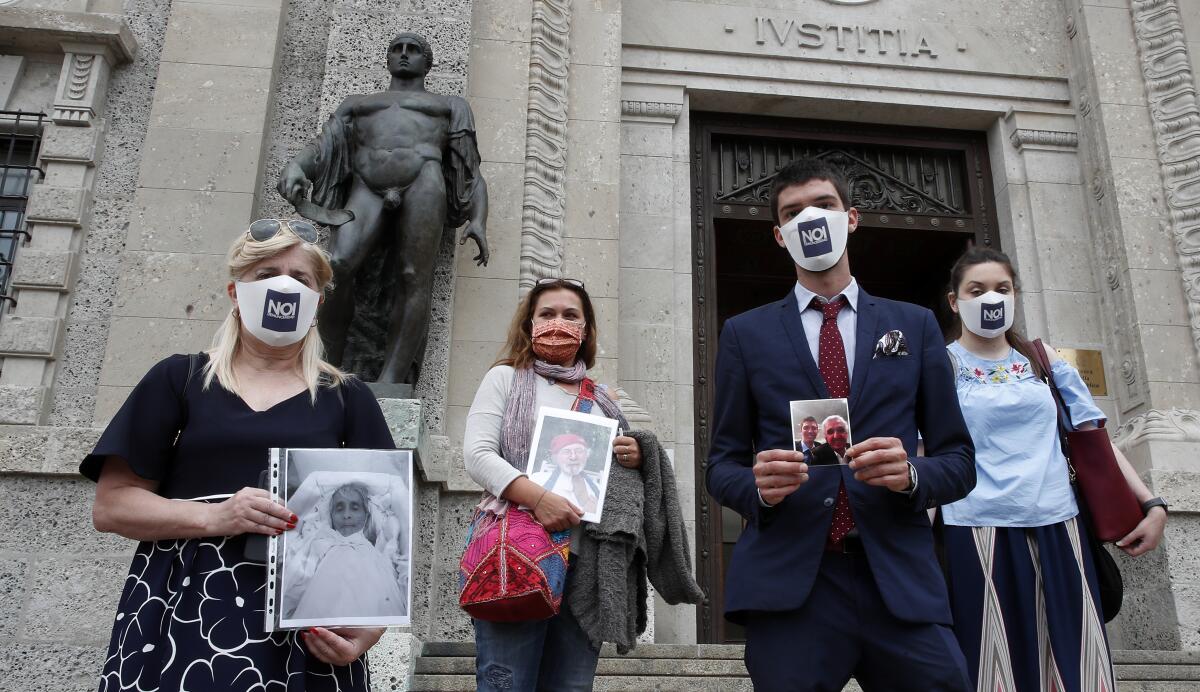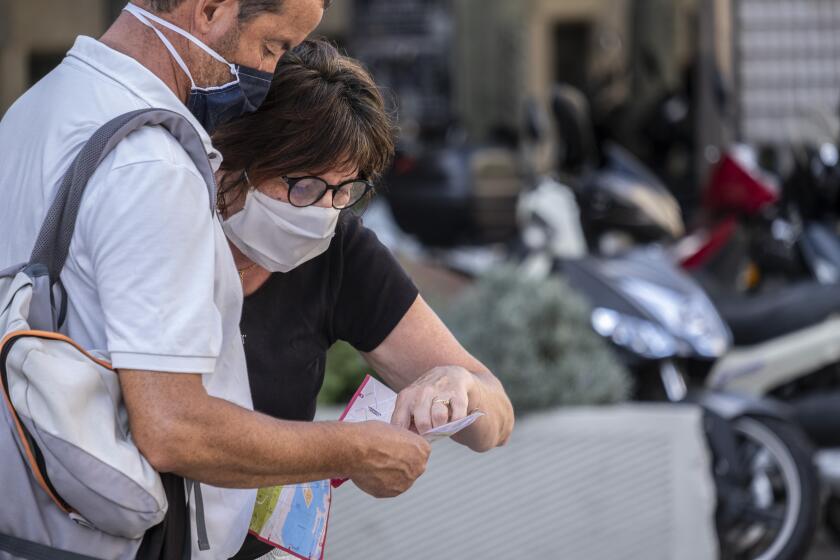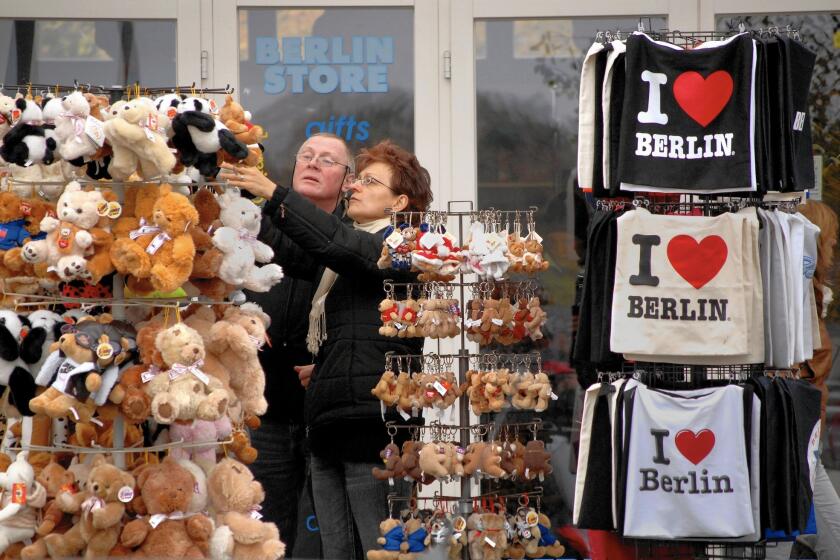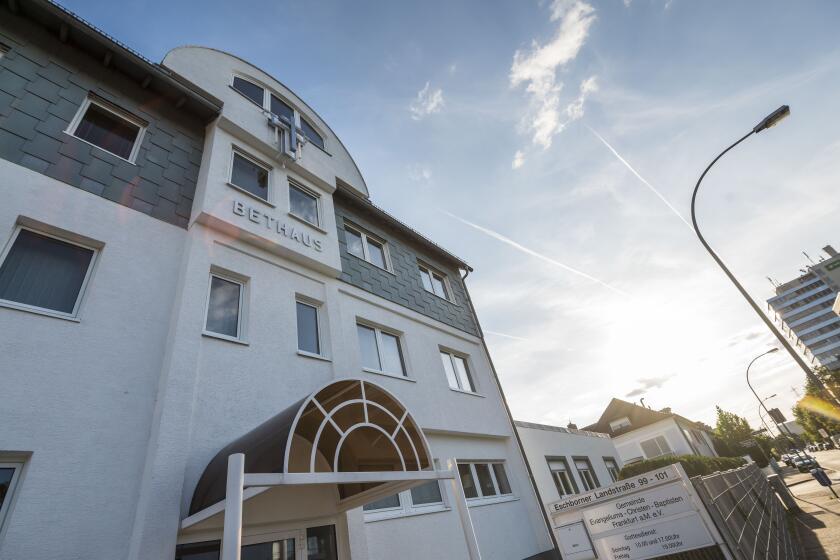âWeâve let our guard downâ: Europe battles to contain new coronavirus surge

BERLIN â Public health officials across Europe are sounding the alarm over a resurgence of coronavirus cases as the continentâs countries ease lockdowns and international travel ramps up, with some experts warning that citizens have become too complacent.
The increase is marked in countries such as Spain, while Eastern Europe and the Balkans, which were largely spared the worst of the early pandemic, are seeing a steep increase in recorded cases.
Boris Johnson, Britainâs prime minister, warned of a looming âsecond waveâ of COVID-19 across Europe on Tuesday, while the head of Germanyâs public health authority said: âWeâve let our guard down.â
Some governments are already taking measures to slow the spread. Britain has imposed quarantine on people returning from Spain, while Germany and France have ordered mandatory testing for travelers from high-risk areas, including the U.S.
Berlin is making the move as Germany, which thought it had successfully beaten back COVID-19, is experiencing a troubling rise in infections. There have been close to 4,000 new cases recorded in the past week.
Lothar Wieler, head of the Robert Koch Institute, Germanyâs public health authority, said he was very concerned. âWe donât know if itâs the start of a second wave, but of course it could be.â
Europeâs tourism revival is hitting snags only weeks after nations reopened their borders, with rising coronavirus infections in Spain and elsewhere.
Officials said the gradual lifting of restrictions on public life across the continent over the past couple of months had lulled people into a false sense of security. Many are no longer observing strict hygiene rules, wearing masks in public or maintaining social distancing.
The rising infection rates could be âquite strongly linked to the relaxation of lockdowns,â said Anders Tegnell, Swedenâs state epidemiologist. But the speed of the uptick in parts of Europe has taken some experts by surprise.
âI thought we would see a lull during the summer,â said Arnold S. Monto, a physician and epidemiologist at the University of Michigan School of Public Health. âI thought it would behave more like the flu than it has, and I didnât think we would see these upsurges.â
Spain is one of the worst-affected countries. It recorded nearly 14,000 new cases in the week to July 26, with regional hotspots in AragĂłn, Catalonia and Navarra. The German foreign ministry advised on Tuesday against all nonessential travel to the three regions.
In Britain, France, Spain and Italy, grassroots groups of people grieving the loss of loved ones ask their governments: âWhy?â
France, which reported 6,325 cases in the past week, is another country where the public is becoming less cautious. âWhat is striking is that, in the past few weeks, the French have lost the notion of social distancing and caution,â Jean-François Delfraissy, the French governmentâs top scientific advisor, said last week.
Appealing to peopleâs sense of civic duty, he said: â[Our actions] will determine whether we have an epidemic that is manageable or if there are too many clusters that escape control.â
Tourists are a particular worry. Officials are concerned they are picking up the virus in crowded bars and nightclubs at resorts in countries such as Spain and spreading it among family and friends at home.
New restrictions are being brought in to deal with the upsurge in cases. Belgium moved Monday to toughen social distancing and urge teleworking after a spike around the city of Antwerp, where a curfew has been imposed.
How much of the summer season can be salvaged, and will efforts undermine the push to keep the pandemic under control? Countries may risk importing coronavirus cases from states with much higher levels of incidence.
âWhat I find alarming is that weâre increasingly seeing outbreaks within families, among groups of friends, and that seems to be connected to people returning from high-risk areas,â Jens Spahn, Germanyâs health minister, said Monday.
Some experts see troubling parallels with the situation in February and March, when the coronavirus began to spread exponentially across Europe. âAll of a sudden the numbers have got bigger, but in fact theyâve been growing slowly over the past month or two,â said Graham Medley, professor of infectious diseases modeling at the London School of Hygiene & Tropical Medicine.
âThere isnât a particular trigger â itâs just part of that process of exponential growth.â
Rafael Bengoa, a former health minister for Spainâs Basque country, blamed the new spike on outbreaks among seasonal farm workers, who live in crowded conditions and are often reluctant to be tracked.
The European Union on Tuesday issued a list of 14 countries whose citizens will be allowed back in as visitors, but the U.S. did not make the list.
Another factor was âthe behavior of young peopleâ...âin discotheques and bars,â not only in Spain but also in Britain and France. âThatâs creating a very negative situation,â he said. âThey are assuming they wonât get infected.â
Germany had been praised for its success in containing the pandemic so far, but its crown has begun to slip. The number of new daily cases rose from about 500 in mid-July to 815 last Friday.
Previous surges were confined to specific locations such as meat-processing plants or nursing homes. But the latest are spread across the whole country. âWeâre seeing a rise in cases in many different communities,â said Ute Rexroth, head of epidemiological surveillance at RKI. âIt can be anywhere.â
Public health authorities have also expressed alarm at the big increase in infections in countries that weathered the early months of the pandemic relatively unscathed. Serbia has seen a big uptick, with more than 400 new cases a day. It imposed a draconian lockdown at the start of the pandemic but relaxed it before national elections last month.
A leader in dealing with the coronavirus, Germany has reopened its houses of worship â but a new coronavirus outbreak shows that risks remain.
Romania is averaging about 1,000 new infections a day and recently overtook Poland to become the country with the highest number of confirmed cases in Central and Eastern Europe.
Some academics are arguing that the term âsecond waveâ is more applicable to seasonal infectious diseases than COVID-19.
The notion, which has no scientific definition, derives from past influenza outbreaks â notably in 1918 and 2009 â when the disease almost disappeared in the summer and returned in autumn and winter, killing a greater number of people.
Researchers have been surprised by how little COVID-19 is responding to seasonal variations in temperature and behavior. âI wasnât expecting it to increase in summer,â said Paul Hunter, professor of medicine at the University of East Anglia. A study from Japan found that the chances of getting the disease indoors were 19 times greater than outdoors, he noted.
Some say mutations in the influenza virus contributed to second waves by increasing virulence and transmissibility. Although there have been some mutations in the COVID-19 virus, no material changes have been observed.
Š The Financial Times Ltd. 2020. All rights reserved. FT and Financial Times are trademarks of the Financial Times Ltd. Not to be redistributed, copied or modified in any way.
More to Read
Sign up for Essential California
The most important California stories and recommendations in your inbox every morning.
You may occasionally receive promotional content from the Los Angeles Times.















